If you give birth at a hospital how well do you trust that the baby you go home with is the baby you gave birth to? Today most hospitals still rely on name tags, though with some high-tech gadgets like security cameras, bar code scanners, foot and fingerprint readers, and of course there’s DNA testing if maternity or paternity of a baby is called into question. That wasn’t the case in 1930, a time when hospital births were only just starting to become usual and then only in larger cities, and postpartum stays could last over a week. Today I will share the story of the Great Chicago Baby Mix-Up which made international news and jolted the patient identification medtech industry into action.
Table of Contents
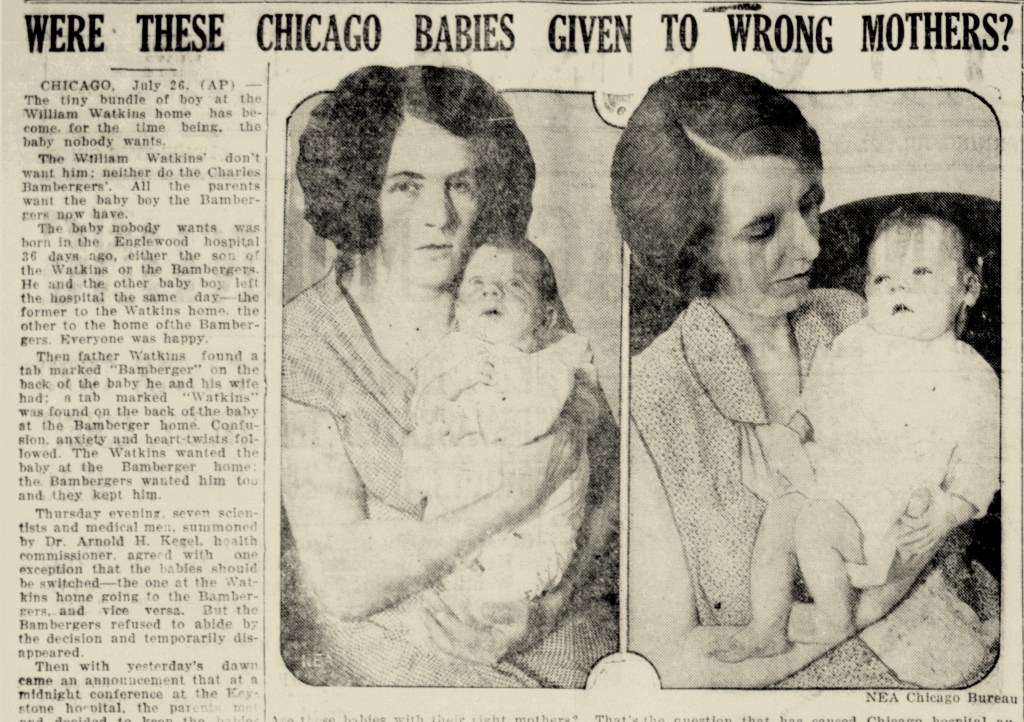
The Births
On June 30th 1930, at the Englewood Hospital in Chicago, Mrs Margaret Watkins’s firstborn child came into the world at 4:47 p.m. Her husband, Mr William Watkins, a traffic manager, waiting with the other expectant fathers was told he had a son. Perhaps Mr Charles Bamberger, a bricklayer, overheard Mr Watkins’s good news while waiting for his own. A couple hours later, Mr Bamberger would learn that he too had a new son, his third child, born at 6:23 p.m.
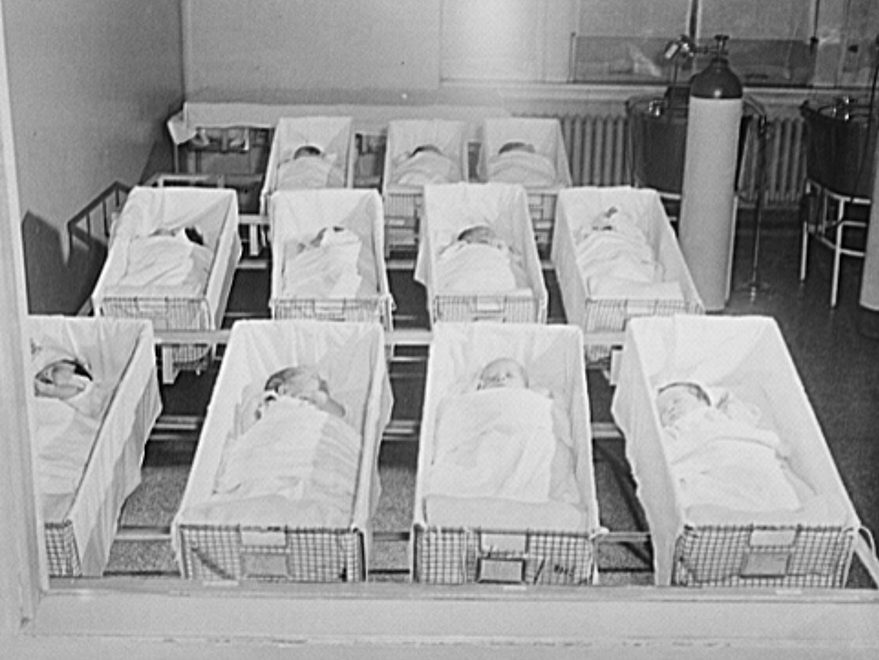
According to Lynne Curry in the Encyclopedia of Chicago, in the 1930s, almost half of all births in the city (45%) were midwife-assisted homebirths (but not always by choice). Women who did give birth in a hospital often stayed for one to two weeks and received a lot of help caring for their newborn(s) from nursery staff. Our Mrs Watkins and Mrs Bamberger shared a room for ten days before they were discharged on July 9th.
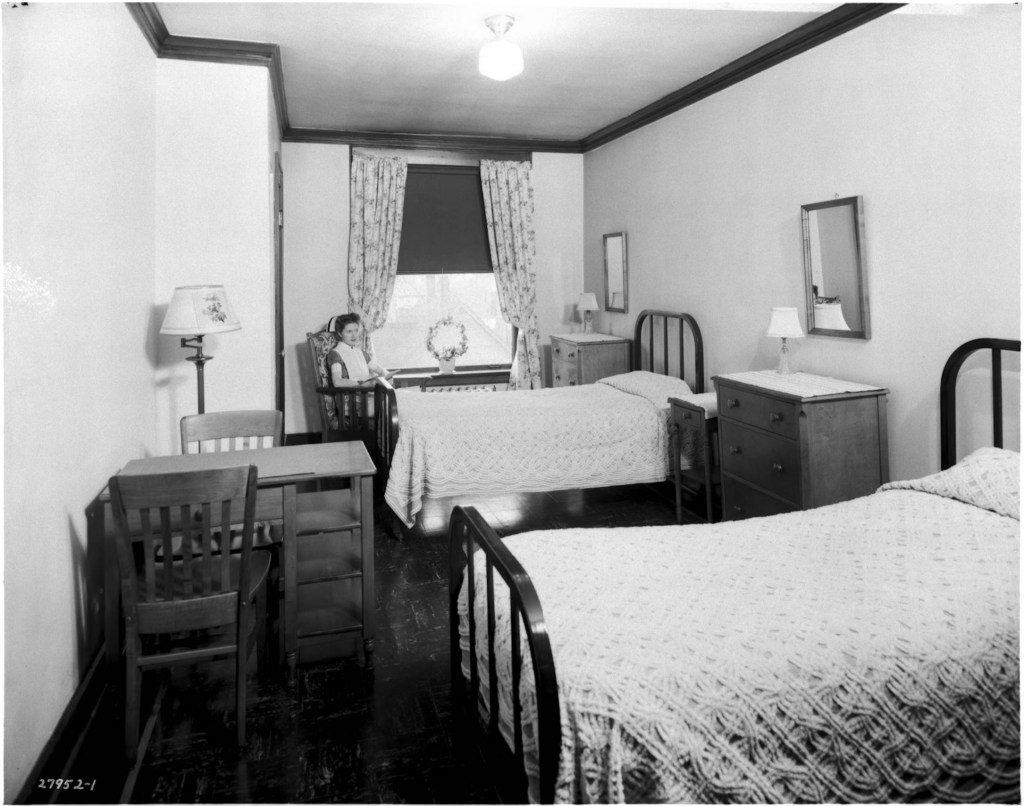
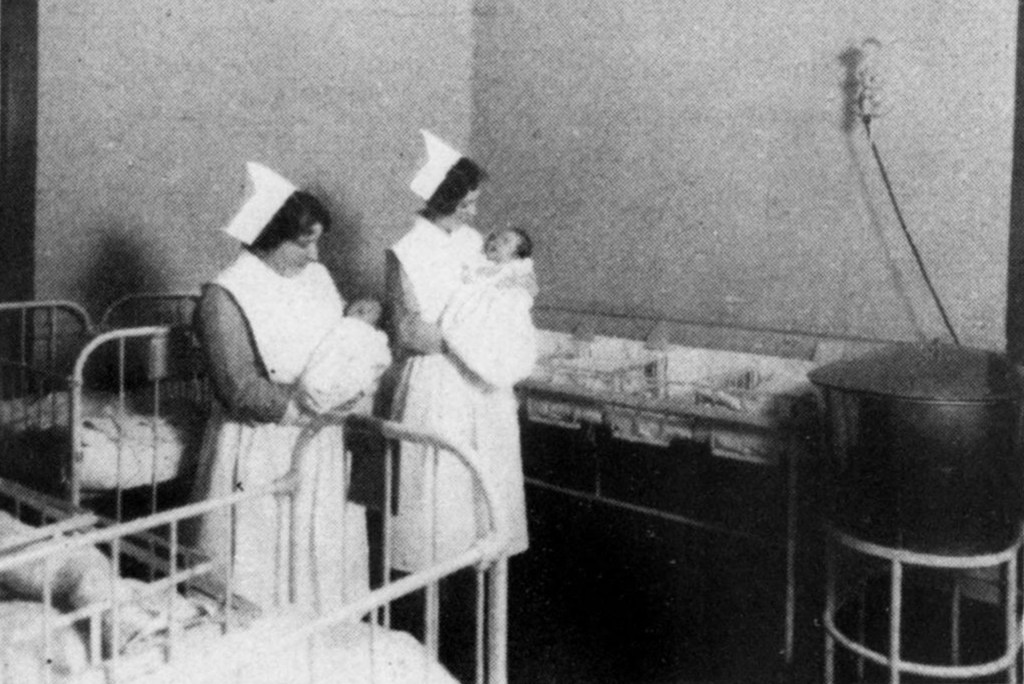

The Discovery
On July 12 1930, in their apartment home at 1619 West 82nd St, Mr Watkins decided he would give his new baby a bath. As he undressed the wee mite he found a sticker of sorts on the baby’s back. Written on it in permanent red marker it read: Bamberger. Panic set it: Did the hospital give him the Bamberger’s baby? If so, where is his baby?
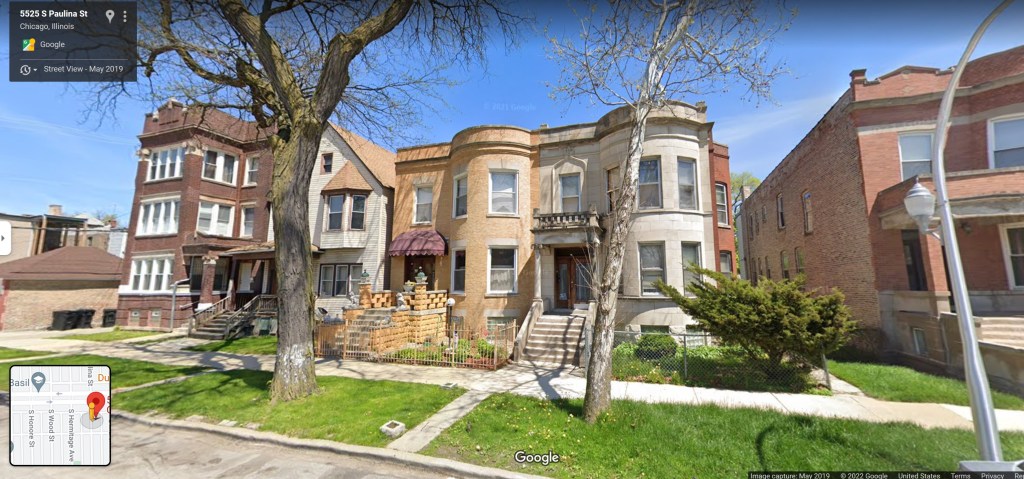
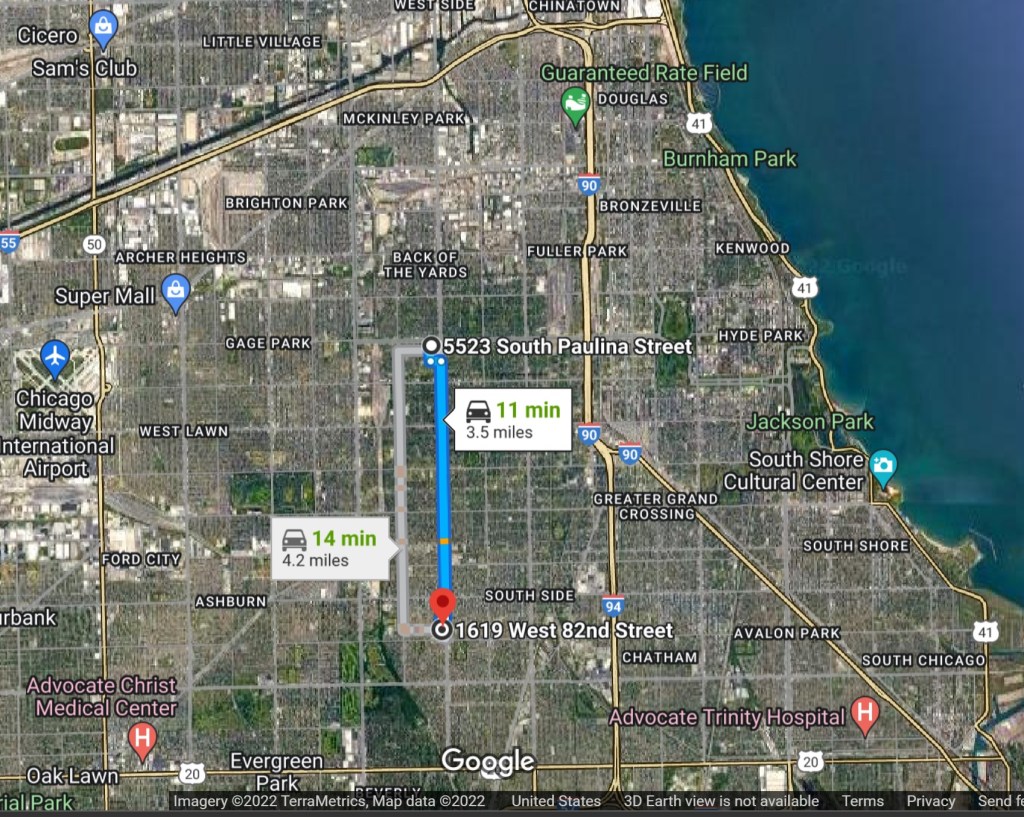
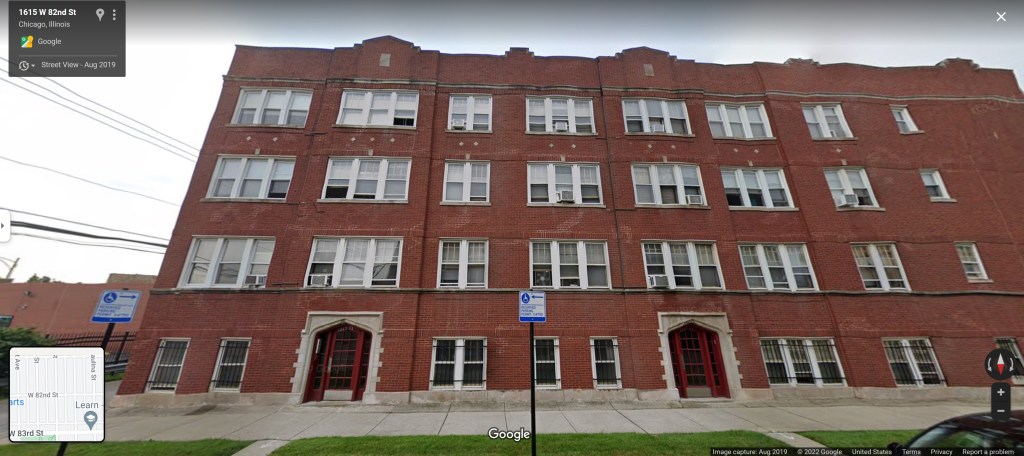
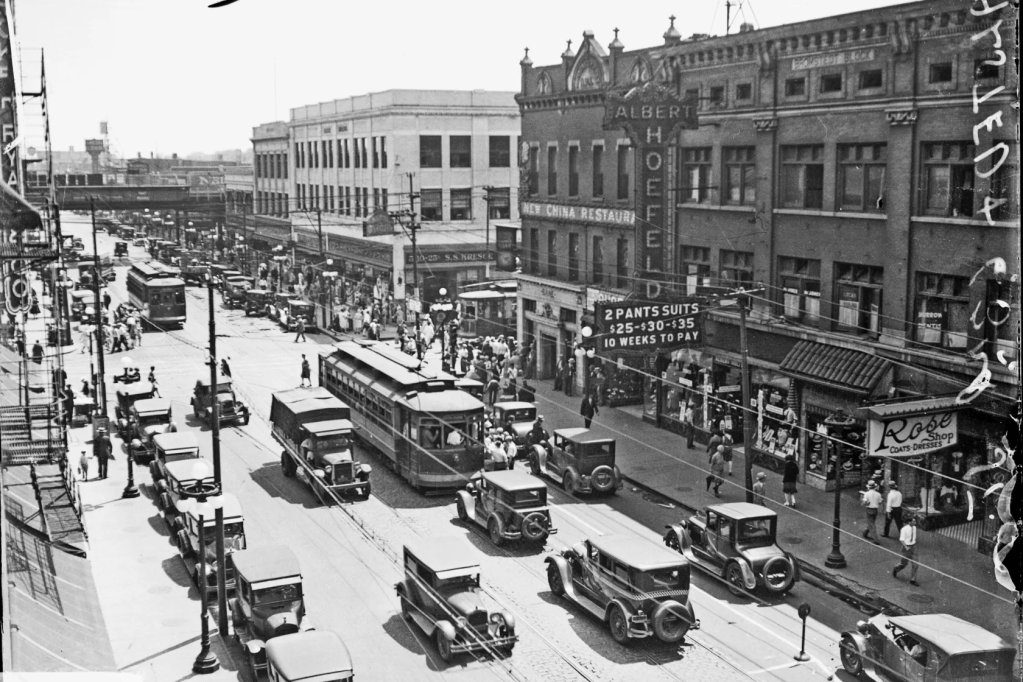
Depending on who is telling the story, Mr Watkins then calls up Mr Bamberger, over at 5523 South Paulina Street to tell him what he found. Mr Bamberger said that they had found a similar tag saying “Watkins” in the bassinet but had thrown it away.
Both families contact the hospital and the hospital insisted that the tags must have ended up on the wrong babies following a bath in the nursery, but that the babies definitely (definitely) went to the correct homes. Unsatisfied with this answer, Mr Watkins contacted Dr Arnold H Kegel, the Health Commissioner of Chicago at the time (now most famous for those pelvic floor exercises) and he promptly started an investigation. Initially, they ran blood tests which came back inconclusive because everyone involved had the same blood type (this was before the rhesus factor was tested for). Then they considered the skin pigmentation but that too failed because each family had one “fair” and one “dark” complected parent.

Dr Kegel hoped that anthropology (read: eugenics) would clarify the situation saying,
“Our chief hope is anthropology. One of the babies is Semitic, the other Caucasian, and experts analyzing the different racial characteristics of the head, hair and features should be able to throw some light on the secret. However, they look as alike as two peas in a pod.”
Dr Kegel, quoted in “Shifted Tags Cause Baby Mix-Up in Chicago[…]” New York Times 20 July 1930
According to an article in the Norwich Sun, Dr Kegel set up an experimental lab in his home and invited, “pathologists, ophthalmologists, dermatologists, obstetricians, criminologists, finger-print experts, attorneys and jurists.” They took blood and hair samples, skin scrapings, “photomicrometerings”, and x-rays of the parents and the babies. Poor babies.
The Conclave of Experts
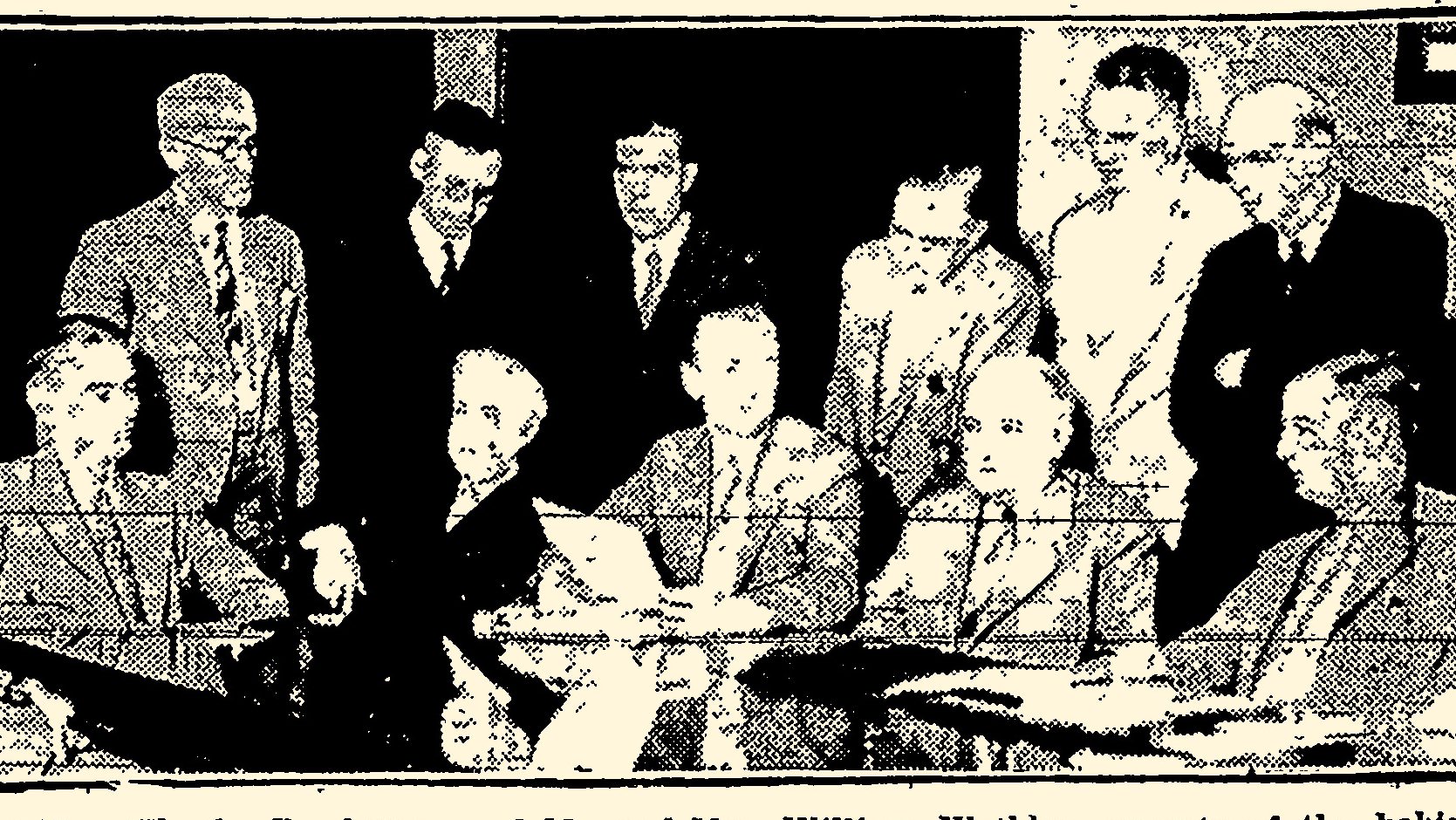
At 11 a.m. on July 24, 1930, Dr Kegel and two officials of the International Society of Medicine: Dr Francis E Harrington of Minnesota and Dr. C.C. Slemons of Michigan, plus Chief Justice Harry Olson of the Municipal Court and the panel of thirteen experts sat in on a “final conclave” at Dr Kegel’s office.
The experts gave their findings: Dr Gerhardt von Bonin, an anthropologist at the University of Illinois, made microphotographic and x-ray measurements of the “bones, skulls, and members” of the babies and parents to look for hereditary details, concluding on the basis of head measurements that the babies had been switched. Dr Eastman and his aides also looked at the babies’ heads, explaining that because this was Mrs Watkins’s first baby, it would have an oblong head, whereas Mrs Bamberger already had two children, and her baby would have a round head (this is 100% crap, just in case you’re wondering) but based on what they determined re: round vs oblong, they agreed that the babies had been switched.
Dr Hamilton R Fishback performed the blood tests which “showed conclusively that the blood of the baby in the Bamberger home was identical with that of Mr and Mrs Watkins.” Dr Cleveland White, associate in dermatology at Northwestern University examined the birthmarks on the Bamberger baby and Mrs Bamberger and said that they were only incidental and “not even the same type” so they had “no scientific value”.
Of the thirteen experts consulted, two refrained from passing judgement, and only one dissented: Dr Ferdinand Watzek the “world-famous criminologist.” He was a detective from Vienna working as the director of the Northwestern University Crime lab (and who communicated through an interpreter). He said that based on the fingerprints he believed the babies went to the right parents.
The Media Circus
The overwhelming majority of the experts believed that the babies had been switched and that they should be switched back. But Mr Bamberger didn’t agree, saying,
“I won’t give up the boy I have. I’ll barricade my house and hire a lawyer.”
Mr Bamberger, quote in “Experts ‘Untangle’ Mix-Up of Babies” New York Times, 25 July 1930
Mrs Bamberger hadn’t been well enough to attend but Mrs Watkins was there with the baby they had been sent home with. She waited with a gaggle of reporters in the hall and it was noted that the conclave didn’t even break for lunch, they went straight through to 1 p.m. when Mr Bamberger stormed out. After which, they stopped Dr Kegel and goaded Mr Watkins into saying,
“I’ll go out there and take my baby by force!”
Mr Watkins, quote in “Experts ‘Untangle’ Mix-Up of Babies” New York Times, 25 July 1930
Meanwhile, at the Bamberger’s home, there was already a frenzy of press, looky-loos, and neighbours. Some reporters banged on Mr Bamberger’s door to get a statement, they described him as “a distraught man in shirt sleeves who said he was upset and his wife was hysterical.” Mr Bamberger felt that the whole situation was a political stunt.
“I know my own baby and nobody is going to take him away from me. My wife is convinced the baby is ours. I guess a mother’s instinct is as good as the opinions of a lot of medical experts, bah!”
Mr Bamberger, quoted in “Experts ‘Untangle’ Mix-Up of Babies” New York Times, 25 July 1930
Soon after, the crowd watched as Mr Bamberger drove away with his older children and wife with the contested baby in her arms.
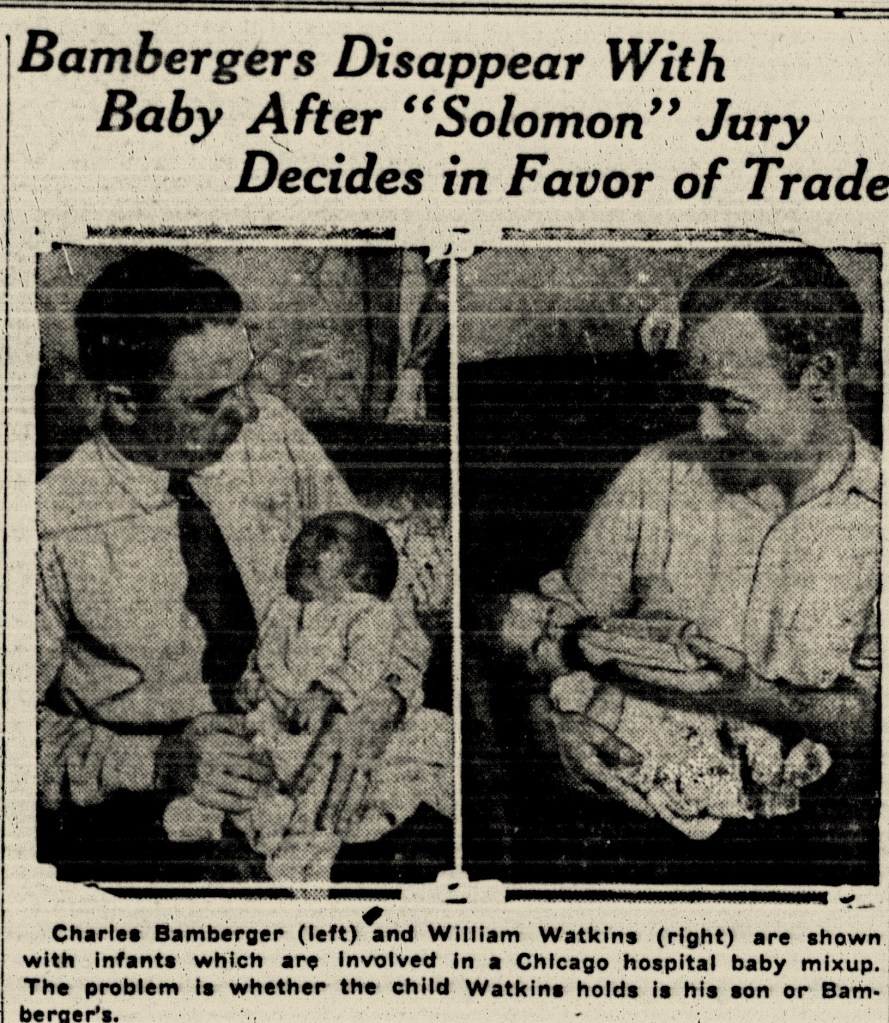
When Mr and Mrs Watkins and Dr Kegel arrived, there was a message from Mr Bamberger’s lawyer that he had advised Mr Bamberger to shoot Dr Kegel as a trespasser if he set foot on his property. Dr Kegel made sure to pass that message onto the press and Mr Watkins said he would see his lawyer in the morning about a kidnapping warrant.
Secrets and Lies
Long after the crowds dispersed, around midnight, over at the Keystone Hospital, Mr Bamberger’s attorney and the head of the hospital, Dr Lewis Keastman and five doctors appointed by him had their own “secret conference” where they decided that the babies were in the right homes.
[edit: I discovered that the papers got Dr Lewis’s name wrong, it’s Dr. Lewis K. Eastman. In 1933 he changed the name of the Keystone Hospital to the Danish-American Hospital (there was already a Norwegian-American Hospital in Chicago area) despite having no Danish physicians working there and there was a kerfuffle with the Danish National Committee. This was after he had his license suspended for fraud involving the neglect of patients.]

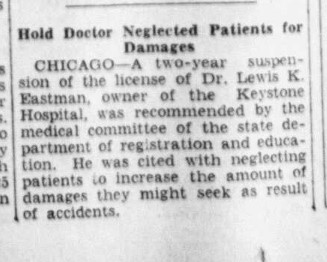
When Mr Watkins was informed of these other expert’s opinions he didn’t accept them. Instead, the Watkinses decided they would take the case to court to have it settled legally, after all, whichever baby they ended up with would be the heir to their property and they didn’t want the other baby showing up later to dispute it. Mr Watkins added that he wasn’t so concerned about future money but about their attachment to the lad,
“If we wait much longer, we’ll be so crazy about this baby we’ll hate to give him up.”
Mr Watkins, quoted in “Still Deadlocked on Chicago Babies” New York Times, 26 July 1930.

Meanwhile, Mrs Watkins wasn’t just dealing with mothering “her” first baby but a colicky baby at that. And Mrs Bamberger found herself less than secure in her beliefs about the baby in the Watkins’ home,
“If only people wouldn’t keep telling me he looks like me or like his daddy and get me mixed up!”
Mrs Bamberger quoted in “Still Deadlocked on Chicago Babies” New York Times, 26 July 1930.
The following morning, July 26th, Mr Barratt O’Hara, attorney for the Watkinses (former Lt Governor of Illinois and later member of the House of Representatives for Illinois 2nd District), announced plans to sue the Englewood Hospital for $100,000 in damages (about $1.8 million in 2022) with the hope that it would recover the Watkins baby from the Bambergers.
Almost as a rebuttal to the news of the lawsuit, that afternoon, the Bambergers announced they would be christening “their” baby the following afternoon. The Watkinses responded that they were considering an injunction to prevent the ceremony.
And zooming out a bit, the baby mix-up was fast becoming a cause célèbre for local activists. The newspapers reported that
“a group of Chicago women prominent in civic work, arranged for a mass meeting of mothers next week to demand that maternity hospitals take proper precautions to prevent future confusion in the identity of children.”
Staff, “Bambergers Lay Plan to Baptise Baby Today” New York Times, 26 July 1930

On July 27, it turned out that the Bambergers were fibbing about the afternoon christening. Not only did they have it done in the morning but at a different location. The baby in the Bamberger’s custody was christened George Edward Bamberger at Our Lady of Solace catholic church at 9 a.m. in a “hasty ceremony”. The Bambergers said they lied about the time and place to avoid legal interference from the Watkinses or Mr O’Hara and they insist that now that the baby’s name is in the church records, the identity dispute was settled. (That’s not how any of this works, my dude.)
Mr O’Hara told the press that if his client ordered him to do so, he could file a writ of petition of habeas corpus, which would require the Bambergers to produce the baby in court and if they refused, the sheriff would seize the infant for the same ends.
On July 28th, Mr O’Hara filed a suit for $100,000 for ‘lost identity on behalf of John Doe (the baby in the Watkins’s care), against Englewood Hospital Association. Adding that tomorrow he intends to file a similar $100,000 suit on behalf of Mr and Mrs Watkins.
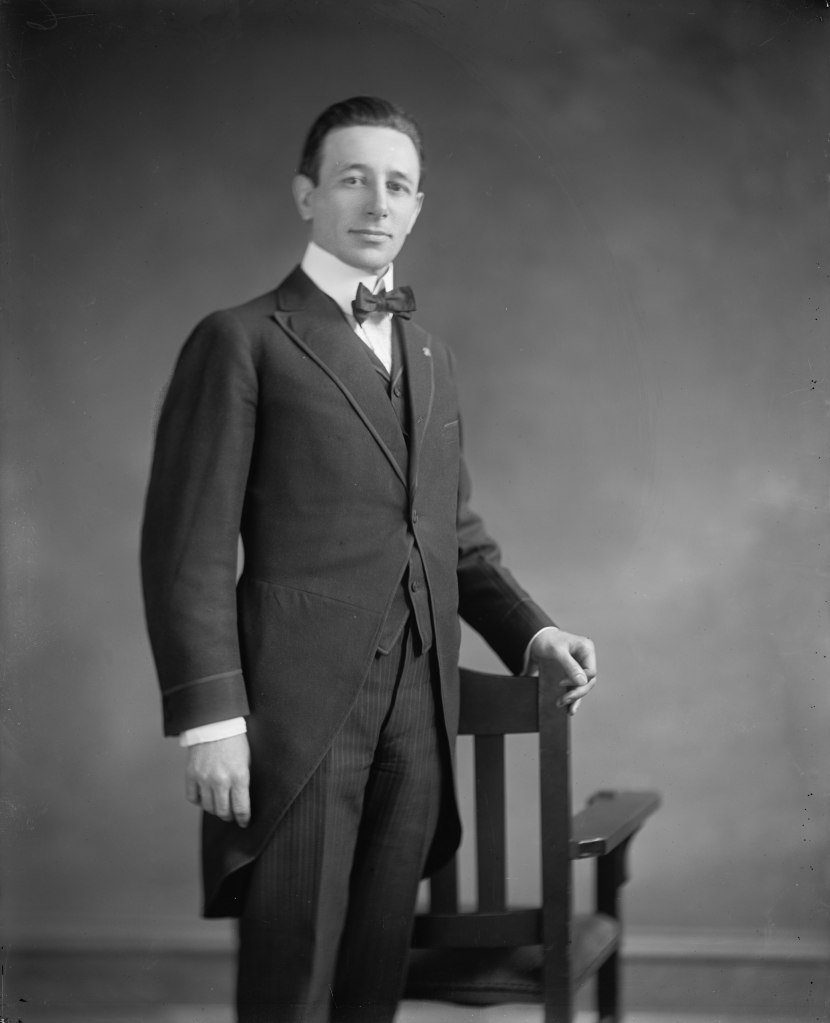
Mrs Watkins made a statement to the press,
“We don’t want to force the Bambergers to give up their baby– or our baby. That isn’t the idea. We may have the right baby, after all. We can’t figure out why the Bambergers can be so sure they have theirs. They seem pretty positive.”
Mrs Watkins, quoted in “$100,000 Suit for Baby on ‘Lost Identity’” New York Times, 29 July 1930.
Mr and Mrs Watkins added that the christening was “all right with them”.
“No matter what he’s been christened if I find he’s mine, I’ll take him […] I don’t plan to have this baby I have baptised.”
Mr Watkins, quoted in “$100,000 Suit for Baby on ‘Lost Identity’” New York Times, 29 July 1930.
Whereas Mr Bamberger only had this to say from his front door,
“It’s settled from my point of view. See my attorney.”
Fair enough.
Meanwhile, Mr Watkins’s parents, Mr and Mrs Evan Watkins saw a photo of the babies and felt that there was a distinct likeness between their son as a baby and the baby in the Bamberger home. So they found a photo taken of Mr William Watkins as a four month old and sent it to the officials at Englewood Hospital.
Mr Watkins’s Skeletons
On June 29th, newspaper editors from coast to coast (this case was HUUGE) must have spontaneously combusted with glee:
Mr Watkins was being accused of being a bigamist.
By a cabaret dancer.
From Philly.
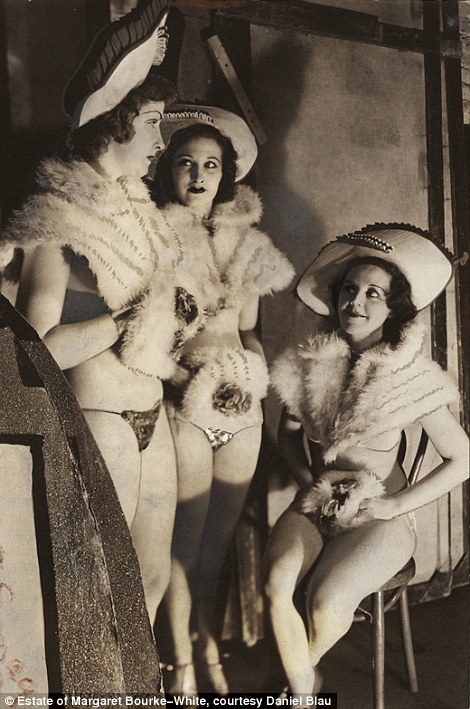
Mrs Anna Van Stan Watkins, was a cabaret girl and/or a nightclub entertainer depending on who’s telling the story. She was living in Philly when she saw photos of Mr William Watkins– her estranged husband and the father of her son– in the newspaper, with his new wife and new baby.
As it turns out, Mr Watkins had married Anna, in 1917, when they were both 17 years old. The following year he sailed for France to fight in WWI while she stayed behind and gave birth to their son. According to Mrs Anna Van Stan Watkins, Mr Watkins simply abandoned her and their son. According to Mr Watkins, they separated in 1921 and had the divorce finalized in Chicago in March of 1928– the same month and year that Mrs Margaret Stahle Johnson was finalizing her divorce. Mr Watkins and Margaret married on June 29th 1929 (so, erm, I guess, happy anniversary?)
This threw a wrench into the works for Mr Ohara to file the second lawsuit on behalf of the Watkinses, because if Mr Watkins is a bigamist, then Mr and Mrs Watkins aren’t married and their natural son, whichever baby it is, is illegitimate.
But Mr Ohara had multiple plates a-spinning: he’s also working for those concerned mothers, in particular Mrs Grace Dibrell’s group who had him file a bill in equity in the Circuit Court asking for a judicial review and a finding to establish the infants’ identities.

Lawsuits are Filed
On July 30th, Mrs Watkins, without Mr Watkins, filed a $100,000 suit against Englewood Hospital for ‘agony of doubt and fear’.
Go-on girl, get em.
The following day The Associated Mothers of Illinois was created and they sponsored state legislation to prevent this kind of baby mix-up from happening ever again. Mr O’Hara was their attorney and he urged them to advocate for a law requiring monthly hospital inspections and a special committee for suggestions on solving the Watkins-Bamberger baby mix-up.
By August 2nd, the Chicago Medical Society officially recognized the baby mix-up. In a conference with their president-elect, Dr John R Harger and Dr Kegel, they emphasized that all of the city’s hospitals had marking systems for newborns but they conceded that they should implement a uniform plan which included two legal witnesses. Meanwhile, the press added to the confusion by claiming that a jury of scientists decided the babies had been mixed up while a jury of doctors said they weren’t. They were comparing the city’s Health Commissioner’s thirteen experts vs Mr Bamberger’s secret midnight meeting.
Englewood Speaks Out
Of course, all this time Englewood Hospital was getting a lot of negative publicity, so the hospital’s superintendent A.E. Paul, finally published an article on the issue in the trade magazine Hospital Management. The New York Times reported second-hand what was to be included in this article, in short: denial denial denial.
“The evidence supporting this conclusion is: First, that the adhesive tape identifying each baby was attached to each baby promptly after its birth and remained upon the babies until after they left the hospital; second, that the weight of the Watkins baby taken five days after it left the hospital corresponded with its record of daily weights taken while it was in the hospital; third, that the mothers seemed satisfied on leaving that at all time during their stay in the hospital they nursed the same baby as the one they took home from the hospital; and fourth, that the parents of the Bamberger baby believe that they have the right baby, have had it baptized as theirs and refuse to give it up.”
“Baby Mix-Up Denied By Chicago Hospital” New York Times, 10 Aug 1930.
Update: I was able to find a complete copy of the article in Hospital Management:
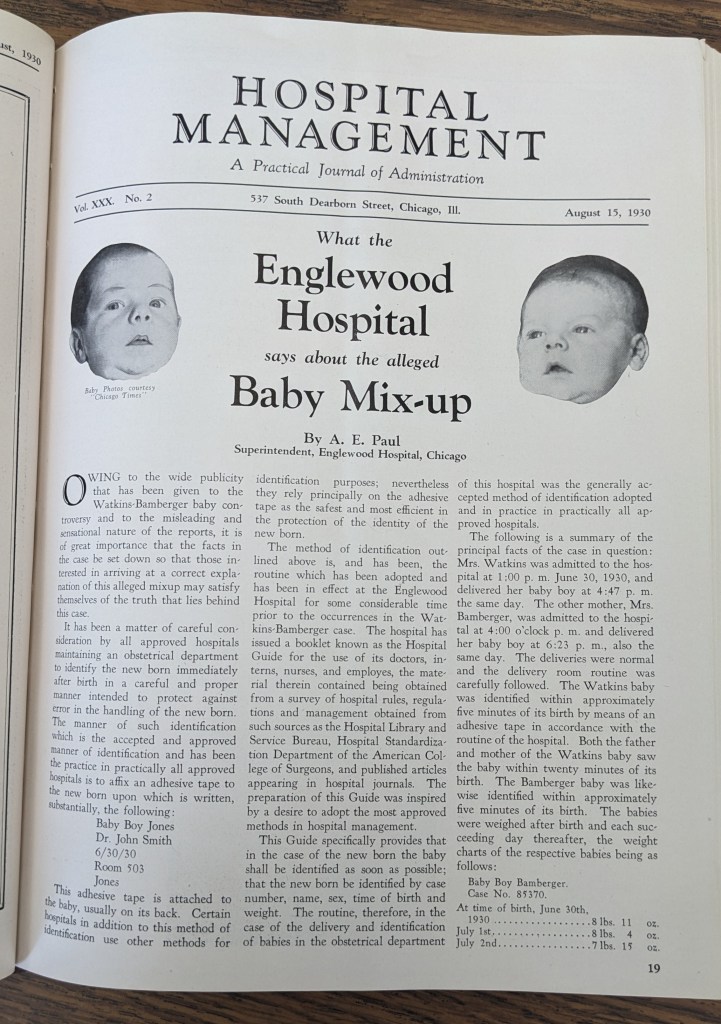
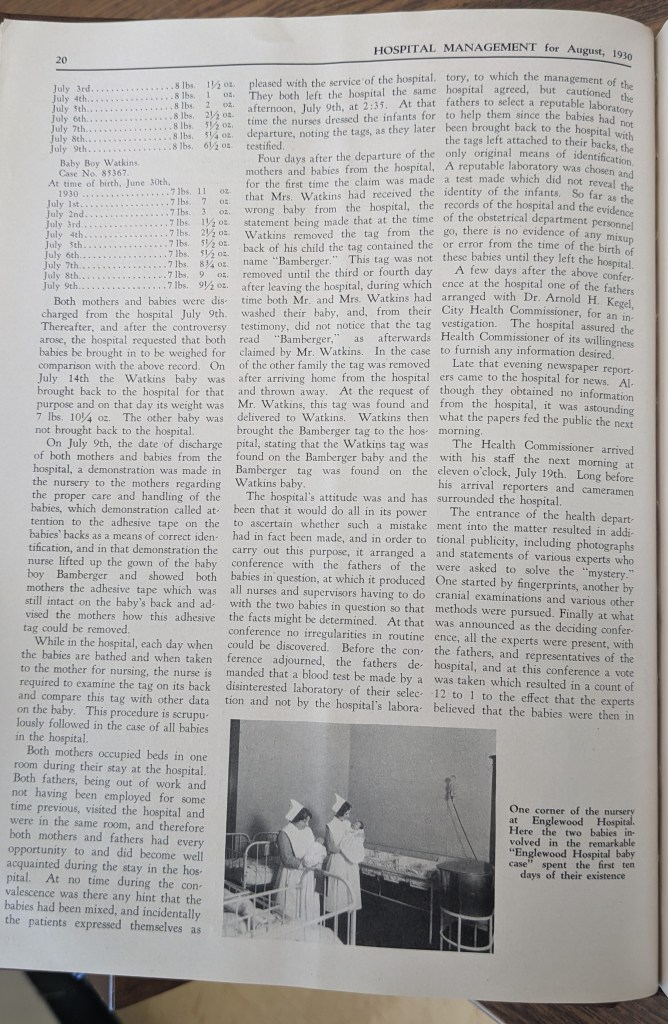
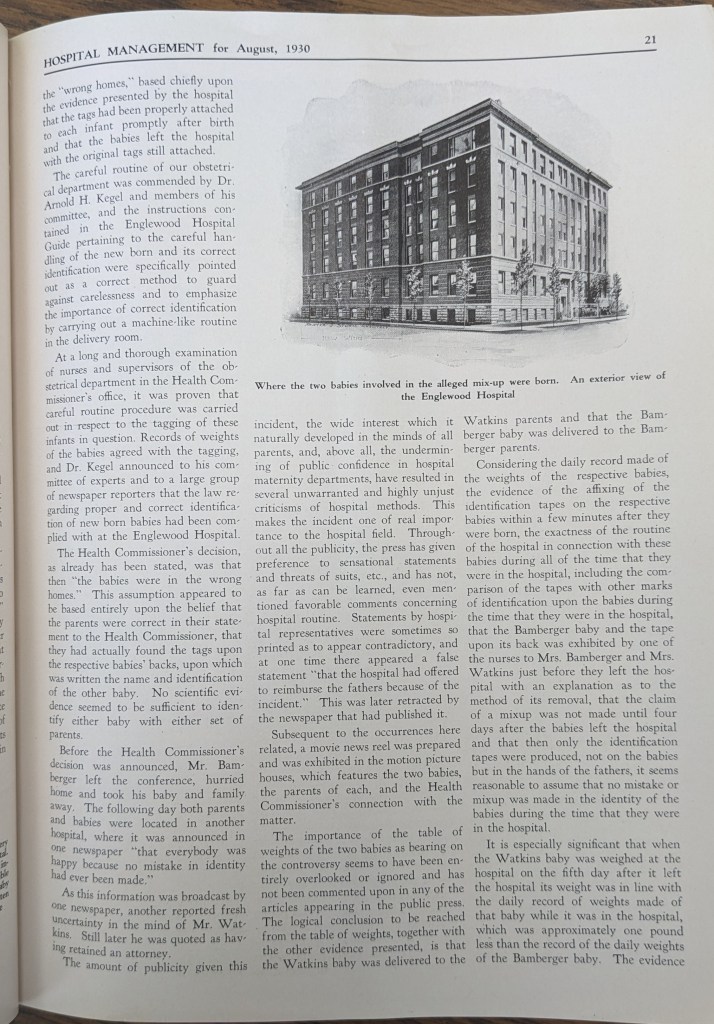

The NYT’s summary is very good and hits the main points– but they leave out the shade cast on Mr Watkins in particular:
“Both fathers, being out of work and not having been employed for some times previous, visited the hospital and were in the same room, and therefore both mothers and fathers had every opportunity to and did become well acquainted during the stay in the hospital.”
A. E. Paul. Aug 6 1930. “The Englewood Hospital Baby Case.” Hospital Management 30(2). Archive.org
The article claims that both Mr and Mrs Watkins testified that they had both bathed the baby in the days between coming home and when Mr Watkins made the discovery. Mr Watkins who brought it to Mr Bamberger’s attention, then went to the hospital with the tags (sans babies) claiming the babies were swtiched. It was the fathers who requested third-party blood tests, which when inconclusive spiraled into all the drama I have covered.
The timeline of events presented by the article is that the panel of experts assembled by Dr Kegel determined that the babies had been switched but not beucase of their “scientific” findings but with the understanding that the id-tapes used by the hosptial were correctly attached to each baby immediately after birth and the tapes don’t just fall off and certainly don’t reattach to other babies. So the whole baby switcheroo rests on Mr Watkins’ claim of finding “Bamberger” on the tape on the baby in his home. How trustworthy is Mr Watkins? I don’t know if A.E. Paul met Mr Watkins in person. And I certainly don’t believe that someone’s employment status circa 1930 in the United States is evidence of their ethics… but swapping or lying about swapped babies wouldn’t be the most egregious thing an unemployed sociopath of a father has done for the love of money.
A.E. Paul is of course biased here, his job is to defend the hospital and the scientific principles the hospital system aspires to… but Mr Watkins did make the fuss about the blood testing in the news reel too. No spoilers here, but in this research, even prior to getting a hold of this article, I have serious reservations about Mr Watkins’ motivations. But to fake a switched baby?
The following Monday, Judge Josep Sabath was to review Mrs Watkins’s petition for a writ of habeas corpus. The situation promised to be drawn out and physically and financially gruelling, then…
A Sudden Conclusion
Mrs Bamberger changed her mind, then she changed her husband’s mind, and they called Dr Kegel, who had them all rush over to Mrs Watkins’s apartment (while Mr Watkins was out at a ball game).
“A little tearful, the two mothers undressed the respective infants, exchanged them to each other’s arms and embraced.”

Centralia Daily Chronicle reported that when Mr Watkins came home, he got upset about the exchange, claiming that the Bamberger’s took advantage of his wife while he was gone. He threatened to sue them.
But it never came to anything. On August 29th, Judge Sabath settled the case, the babies were in the correct homes since the swap and that’s where they will remain. He added,
“the Bambergers and Watkinses should rear their children ‘like brothers’ and take a mutual interest in the education of both.”
Judge Sabath, quoted in “Baby Dispute Ends” New York Times, 30 Aug 1930.
A number of newspapers tried to increase the drama of the situation by claiming that these mothers instinctively knew they had the wrong babies. And in the face of these men of science, these experts /spits upon ground/ telling them they had the right babies they swapped them anyway. Take that science! But in fact, it was Mr Watkins (one of the fathers) who realized he had the wrong baby, not by any instinct but by the name tag. And the majority of the experts asked to look into the case believed the babies had been mixed-up… even though so much of the science they were using was bunk.
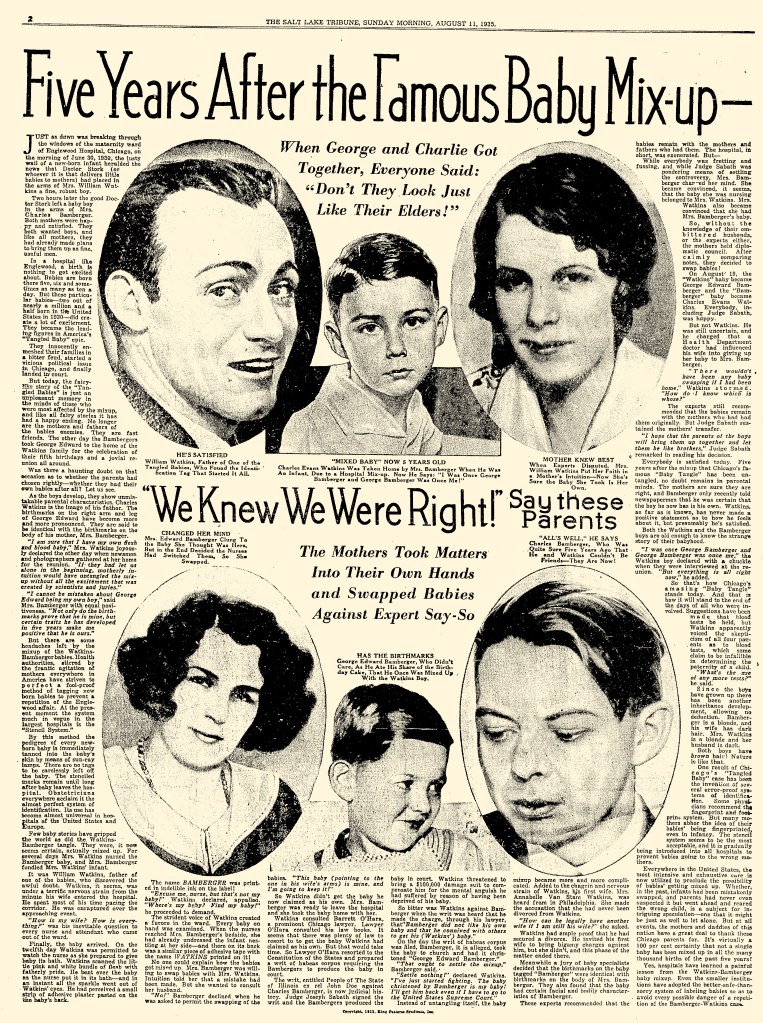
Aftermath
On May 23 1931, over in Philly, Judge Horace Stern approved a suit of divorce brought by Anna van Stan Watkins against William R Watkins of Chicago. The decree was granted on grounds of desertion in 1920 and will be finalized next month. Therefore, Mr Watkins hadn’t finalized his divorce before marrying his second wife. Mrs Anna said she wouldn’t bring bigamy charges against him for the sake of his second child.
In August of 1933, the Norwich Sun reported that the hospital continued to maintain the tags were swapped around not the babies. But the mothers only grew more convinced they had made the correct choice in swapping, however sometime later Mr Watkins suddenly announced, “I think the kid in my home is beginning to look like Bamberger.” (methinks he was seeking a motive for another wife and child desertion, in my opinion, allegedly).
In the three years since the mix up neither family had another child, but Mrs Bamberger said that if she had another,
“I would first insist that my husband be present at the time of birth and that he see just where the baby was taken. Also that he remain with the child until it had been fingerprinted and a tag put on it which would not come off in the bathtub.”
Mrs Bamberger, quoted in “Mother Instinct Defeats Science in Old Squabble of Mixed Babies.” Norwich Sun, 16 Aug 1933.
Mr Bamberger hadn’t wanted any more press on the issue because he said the neighbours had laughed at them, but at the time of this 1933 article, he was laid up in the hospital after a floor in the uncompleted building he was working in collapsed and crushed his legs and arms (I tried to find news about this disaster and failed). The paper incorrectly referred to Baby Boy Bamberger in the article as “George William Bamberger” but his name was George Edward Bamberger.
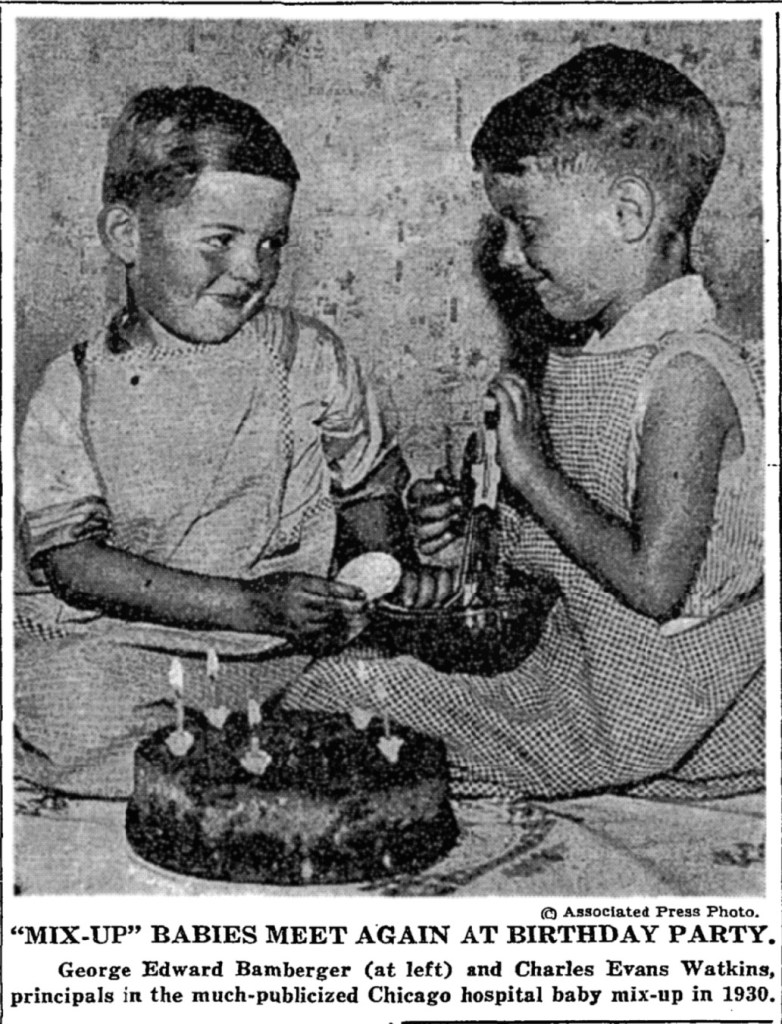
In 1935, the Watkinses and the Bambergers held a joint birthday party for Charles Evan Watkins and George Edward Bamberger. The families claimed to be on friendly terms and the little boys hoped to have joint birthday parties every year.

In 1936, Charles Watkins was featured in a bunch of newspapers with a photo of him tying up a rollerskate but after this, I cannot find reliable information about him.
However, I learned that George Bamberger married and had a family, and he died at age 76 on March 9, 2007, in Illinois.
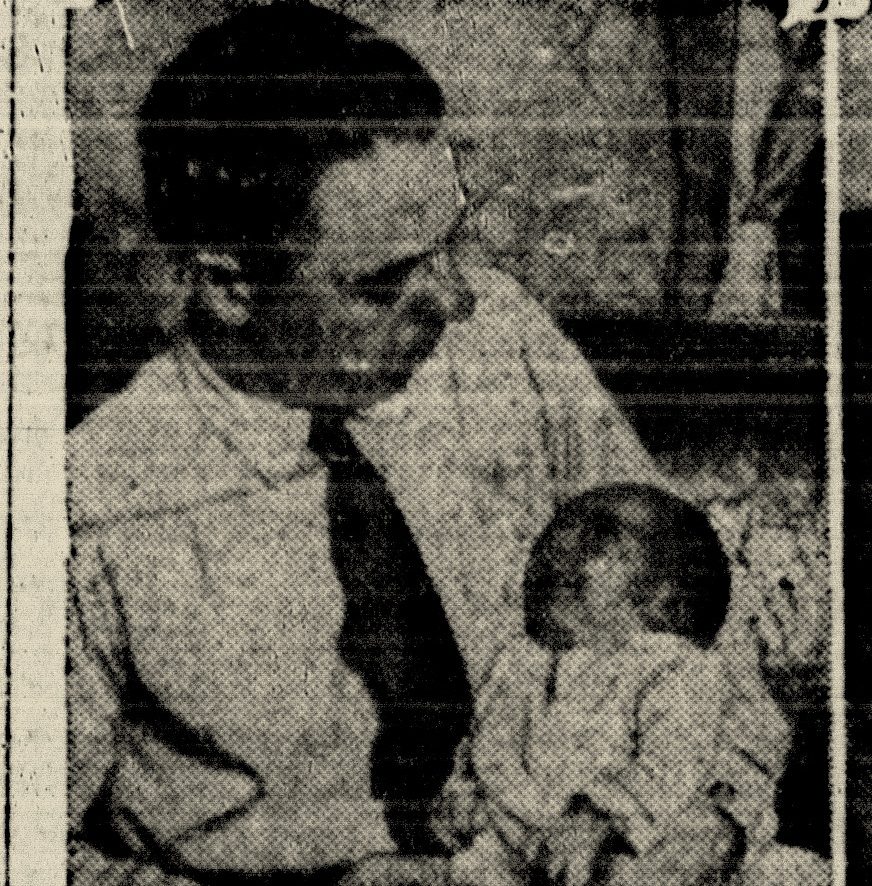
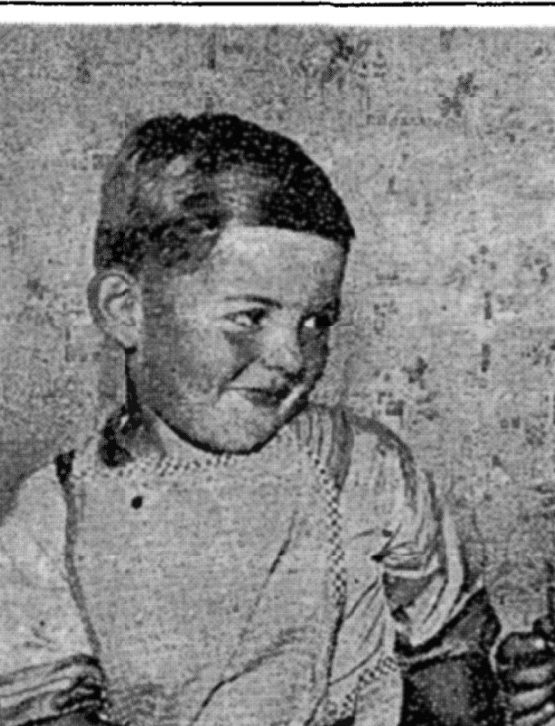
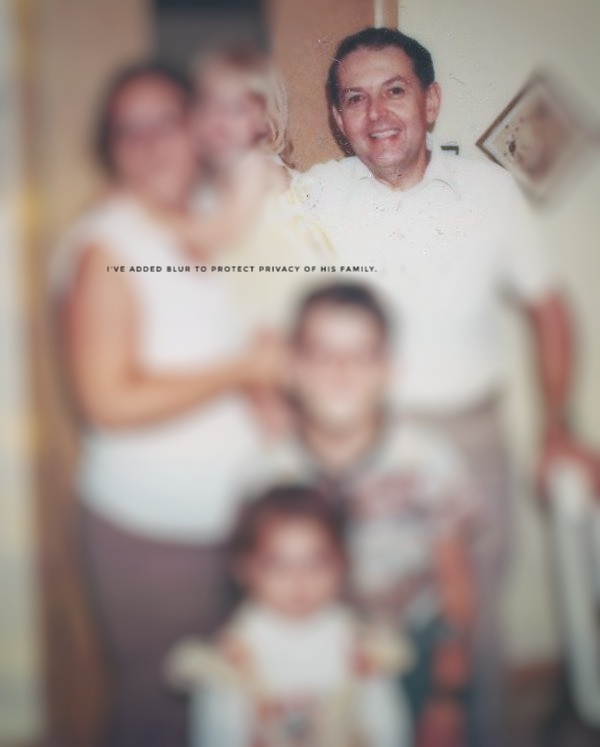
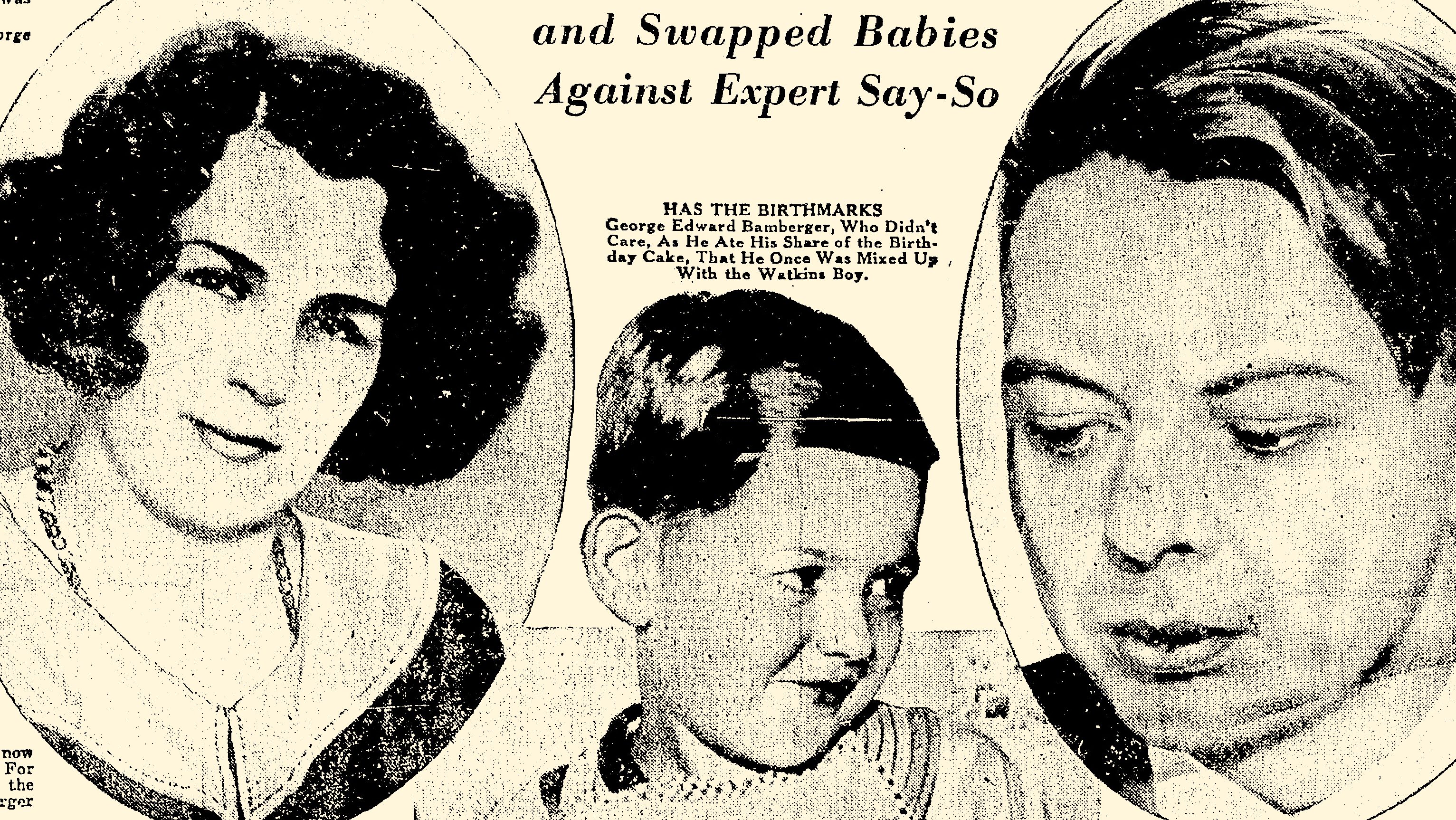
Consequences
One of the results of the great baby mix-up was a push for new and better methods for identifying newborns in hospitals so this wouldn’t happen again (note: it still happens today but instead of hiring quacks to compare skull shapes, we can just run a DNA test). But back in the 1930s, even blood tests were rudimentary: the rhesus factor of blood types hadn’t been discovered yet.
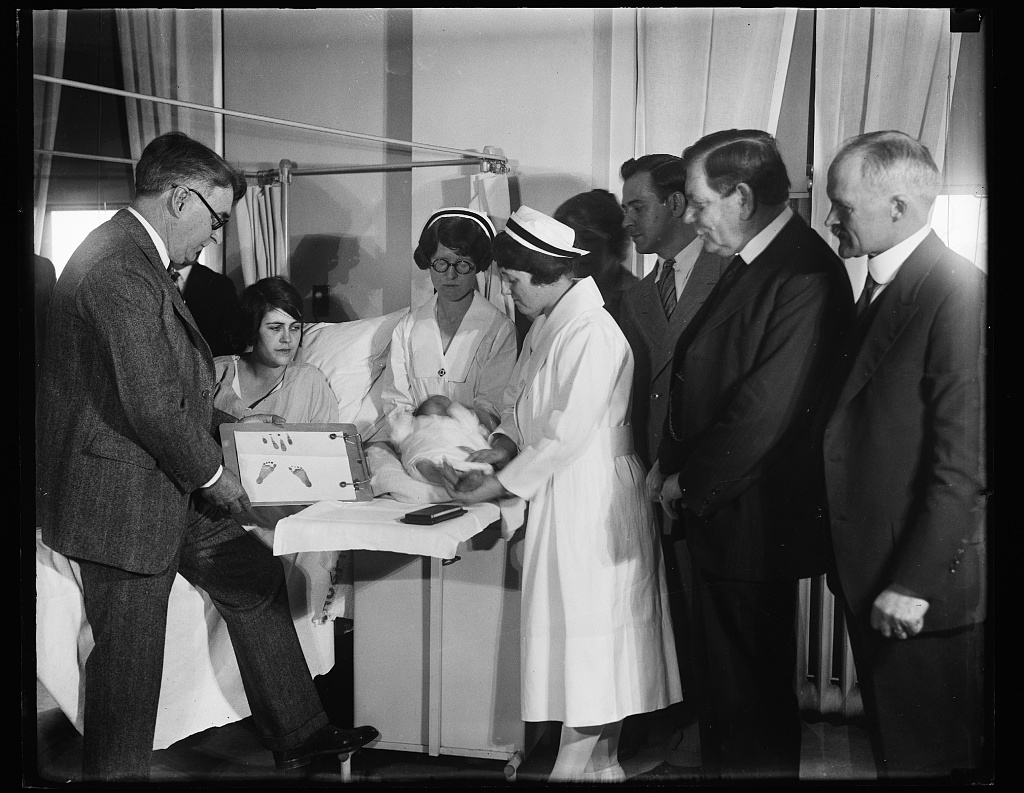
There were bracelets and stickers, and doctors advocated for finger and footprinting to be done shortly after birth for unique identification markers. But according to the Salt Lake Tribune in 1935, “many mothers abhor the idea of their babies’ being fingerprinted, even in infancy.” I guess because it was associated with criminals? Or because it was messy? I don’t know. Parents seem to treasure newborn hand- and foot-prints nowadays, perhaps this attitude change is something I should look into, eh?
A new concept was floated: branding babies, you know, burning marks of ownership into the flesh, after all, it works on cattle.
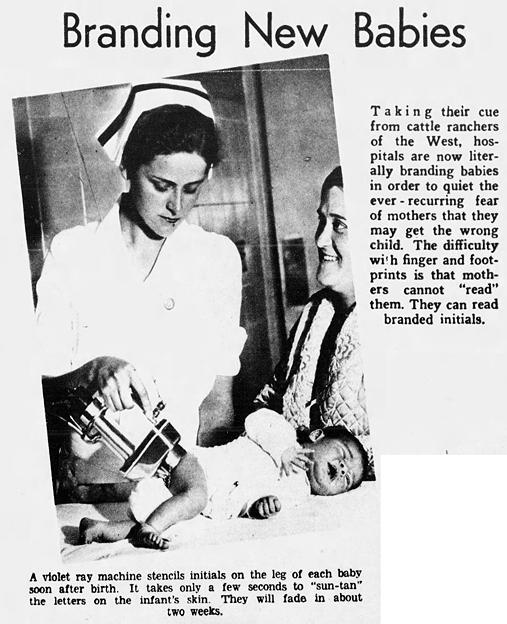
But that, dear readers, is a topic for another time. I want to thank you for reading and I hope you found this interesting. If you have any swapped baby stories, I would love to hear them in the comments or send me a message or email.
If you enjoy this content, please consider becoming a patron on Patreon. You can also subscribe to this blog for notifications when I post. And did you know I have a Youtube channel? Check it out, I think you will enjoy it.
Sources
New York Times “Times Machine” (archive)
- 20 July 1930. “Shifted Tags Cause Baby Mix-Up in Chicago; Parents Worry While Experts Ponder Tests”
- 25 July 1930. “Experts ‘Untangle’ Mix-Up of Babies”
- 26 July 1930. “Still Deadlocked on Chicago Babies”
- 27 July 1930. “Bambergers Lay Plan to Baptize Baby Today”
- 28 July 1930. “Bambergers Steal March by Baptism”
- 29 July 1930. “$100,000 Suit for Baby on Lost Identity to be filed by Watkinses”
- 30 July 1930. “Watkins Accused Now as a Bigamist”
- 31 July 1930. “Sues in Baby Mix-Up”
- 1 Aug 1930. “Baby Mix-Up Stirs Up Women”
- 3 Aug 1930. “Baby Mix-Up Bring Marking Law”
- 10 Aug 1930. “Baby Mix-Up Denied by Chicago Hospital.”
- 20 Aug 1930. “Chicago Baby Mix-Up Settled by Exchange.”
- 30 Aug 1930. “Baby Dispute Ends”
- 24 May 1931. “Divorces Wedded Mate”
- 2 July 1931. “Babies Branded to Guard Identity”
- 1 July 1935. “Baby Mix-Up Boys Now 5 in Reunion”
Newspaper Archive
- 25 July 1930. “Bambergers Disappear With Baby After ‘Solomon’ Jury Decides in Favor of Trade.” Marysville Evening Sun, p 1.
- 25 July 1930. “Mother Instinct Defeats Science in Squabble of Babies That Were Mixed.” The Findlay Morning Republican and Courier, p 2.
- 26 July 1930. “Disagree Over Ownership of Mixed Babies.” Biloxi Daily Herald, p 1.
- 27 July 1930. “Were These Chicago Babies Given To Wrong Mothers?” The Havre Daily News, p 2.
- 28 July 1930. “Parents Ignore Experts.” Norwich Sun, p 1.
- 29 July 1930. “Mothers Protest Baby Mix-Up.” Hanover Evening Sun, p 5.
- 20 Aug 1930. “Mothers Exchange Mixed Babies.” Centralia Daily Chronicle, p 5.
- 16 Aug 1933. “Mother Instinct Defeats Science in Old Squabble of Babies That Were Mixed.” Norwich Sun, p 9.
- 11 Aug 1935. “Five Years After the Famous Baby Mix-Up.” The Salt Lake Tribune.
- 3 April 1936. “Mix Up Baby Growing.” Somerset Daily Herald, p 7.
Archive.org
- media used in video
- “The Englewood Hospital Baby Case” in Hospital Management 30(2).

